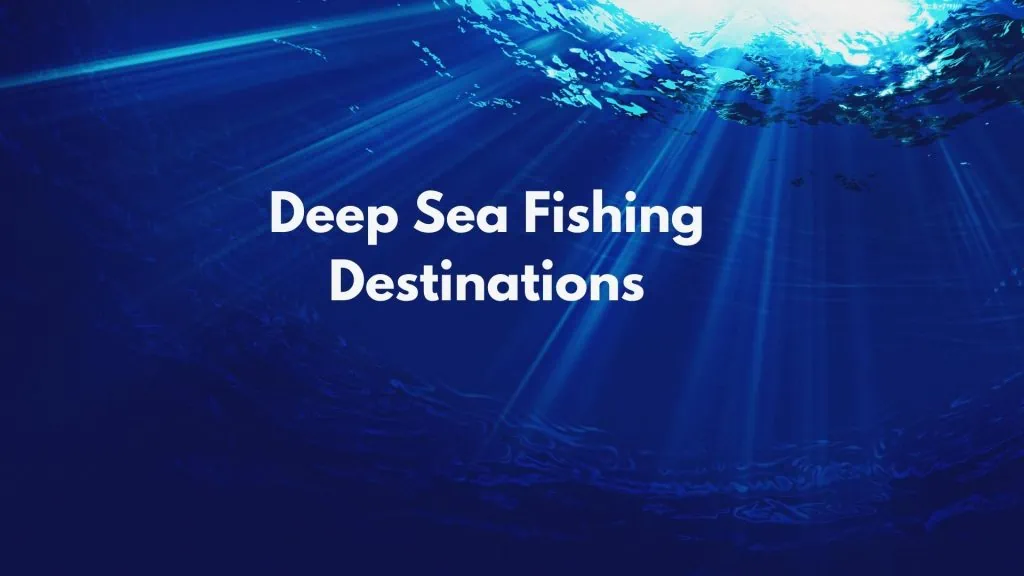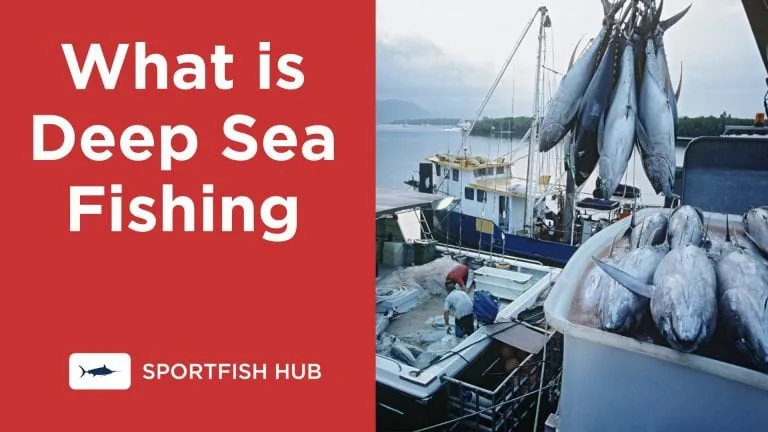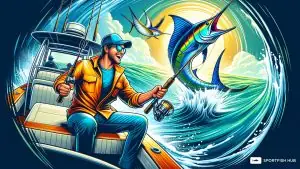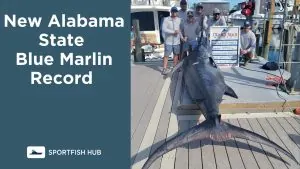Deep sea fishing, also known as offshore fishing, involves heading out into the open ocean waters in pursuit of large fish species. This comprehensive guide covers everything you need to know about deep-sea fishing.
The Definition of Deep Sea Fishing?
Deep sea fishing (Offshore Fishing) refers to recreational fishing that takes place offshore in deep waters, typically over 100 feet deep. To catch larger pelagic species not found near shore, anglers need to venture out in boats capable of handling the open ocean.
See Also: Is Deep Sea Fishing Dangerous?
Table of Contents
- The Definition of Deep Sea Fishing?
- Deep Sea Fishing Destinations
- Types of Deep Sea Fishing Trips
- Common Offshore Game Fish Species
- What is the hardest deep-sea fish to catch?
- What You Should Bring Deep Sea Fishing
- Top Fish Species by Region
- Key Deep Sea Fishing Techniques
- Essential Preparations
- Conclusion
- FAQ
- Why is deep-sea fishing so expensive?
- Is deep sea fishing safe for kids?
- How rough is deep sea fishing?
- Why can’t deep-sea fish come to the surface?
The main appeal of deep sea fishing is the chance to catch “trophy” game fish like marlin, tuna, and shark. These species offer an exciting challenge due to their size and strength. Deep sea fishing also allows anglers to take in spectacular open ocean scenery far from land.
Check out our guide on How to Avoid seasickness.

Deep Sea Fishing Destinations
| Destination | Target Species | Prime Time | Average Depths |
|---|---|---|---|
| Florida Keys | Sailfish, mahi mahi, snapper | Nov – April | 150-300 ft |
| Cabo San Lucas | Marlin, dorado, yellowfin tuna | Oct – Dec | 1,000+ ft |
| Montauk, NY | Shark, bluefin tuna, striped bass | June – Oct | 150-500 ft |
| San Diego | Yellowtail, white seabass, rockfish | May – Oct | 150-250 ft |
| Kona, Hawaii | Marlin, mahi mahi, spearfish | Year-round | 500-1,500 ft |
Types of Deep Sea Fishing Trips
There are several offshore trip types for different skill levels and time commitments:
- Half-day – 4-6 hours, ideal for beginners
- Full-day – 8+ hours, more time offshore to target big game fish
- Multi-day – 24+ hours, extended trips on liveaboard charter boats
There are several types of deep-sea fishing trips to choose from:
Half-Day Trips (4-6 hours)
- Perfect for beginners to experience sport fishing
- Charter provides all fishing gear
- Target fish like yellowtail, albacore tuna, king mackerel
- Shorter duration less affected by weather
Full-Day Trips (8+ hours)
- The ultimate adventure for avid anglers
- Use heavy rods, reels, lines for big game fish
- Explore diverse marine habitats for many species
- Chance to land impressive catches like tuna, sailfish, grouper
Night Fishing Adventures
- Unique deep-sea fishing experience under the stars
- Half-day to full-day excursions available
- Diverse target species like yellowtail, sturgeon, rockfish
Multi-Day Excursions
- Extended 2-5 day trips offshore
- Next-level sport fishing experience
- Chance to use various techniques and target multiple species
- Make lifelong angling memories
Common Offshore Game Fish Species
| Fish | Average Weight | Typical Habitat | Prime Fishing Location |
|---|---|---|---|
| Bluefin Tuna | 250-500 lbs | Open ocean | Northeast US, California |
| Swordfish | 200-300 lbs | Seamounts, shoals | Florida, Gulf of Mexico |
| Sailfish | 60-100 lbs | Warm surface waters | Caribbean, Hawaii |
| Marlin | 200-1000+ lbs | Open ocean, temperature breaks | Hawaii, Costa Rica, Mexico |
| Mahi Mahi | 15-40 lbs | Drifting debris, sargassum | Caribbean, Florida Keys |
What is the hardest deep-sea fish to catch?
Bluefin tuna and marlin are considered two of the hardest offshore species to land. Their brute strength and blistering initial runs quickly strip line from reels. Using heavy gear, perfecting your angling skill, and applying the right techniques give you a better chance against these beasts.
What You Should Bring Deep Sea Fishing
Assuming you are going out on a friends boat or a charter boat, here is a helpful list of items to bring for first-time deep-sea fishing:
- Sun protection – hat, sunglasses, sunscreen, lip balm
- Layers of clothing – waterproof jacket, sweatshirt, long pants. Dress in layers.
- Seasickness remedies – medications, motion sickness wrist bands, ginger candies
- Snacks/lunch – Pack food and bottled water to stay fueled. Avoid messy foods.
- Camera – To document your catch! Make sure it’s waterproof.
- Identification – Fishing license, boat registration, etc.
- Cooler with ice – For your catch after. Bring plenty of ice.
- Gear/tackle bag – For any extra tackle, pliers, knife, etc. you want to bring.
- Cash – For tipping the crew.
- Gloves – Fishing or work gloves to protect your hands.
- Footwear – Non-slip water shoes or boots. No open-toed shoes.
- Rain jacket – In case the weather changes.
- Seasickness remedies – Medications, motion sickness bands, ginger candy.
- Towel – To dry off equipment or hands.
Top Fish Species by Region
The fish targeted vary by location based on the marine habitats:
West Coast
- Yellowtail
- Albacore tuna
- Barracuda
- White sea bass
- Giant Pacific halibut
East Coast
- Bluefin tuna
- Mahi mahi
- Cod
- Striped bass
Gulf of Mexico
- Sailfish
- Marlin
- Mahi mahi
- Snapper
- Grouper
Alaska
- Salmon
- Halibut
- Lingcod
- Rockfish
Hawaii
- Yellowfin tuna
- Blue marlin
- Swordfish
- Spearfish
Key Deep Sea Fishing Techniques
Captains use different offshore fishing techniques:
- Trolling – Dragging lines and lures behind a moving boat
- Bottom fishing – Dropping bait to the sea floor to catch bottom fish
- Deep dropping – Fishing in depths over 300 feet near structures
- Chumming – Dumping bait to attract fish to the boat
Essential Preparations
Follow these tips to prepare for your deep-sea fishing adventure:
- Book a trip with an experienced captain
- Check weather and water forecasts
- Pack proper fishing attire and seasickness medication
- Obtain required fishing licenses
- Learn how to use rods, reels, rigs, and lures
- Follow all safety instructions
Conclusion
With the right preparation, you can have an amazing deep-sea fishing experience catching giant trophy fish. Be sure to practice responsible catch-and-release fishing. Tight lines!
FAQ
-
Why is deep-sea fishing so expensive?
Offshore trips require large, specialized boats with fuel, maintenance, and mooring costs. Equipment needs are extensive as well. Multi-person crews provide services. Excursions often travel long distances offshore burning fuel. Combined expenses drive up charter prices.
-
Is deep sea fishing safe for kids?
Many charters accommodate families and kids ages 4+ for half-day trips. Lifejackets are required for children offshore. Focus on keeping them engaged and hydrated and avoiding overexposure to sun and seasickness triggers.
-
How rough is deep sea fishing?
Offshore waters can get choppy, with higher winds and wave action than nearshore. Rougher conditions are more likely in bad weather. Pick trips with larger, ocean-going boats that handle swells better if concerned about comfort. Seasickness medication and rail seating help on rougher days.
-
Why can’t deep-sea fish come to the surface?
Species living in very deep water have adapted to that extreme environment. Ascending rapidly can cause deadly decompression sickness and gas bubble trauma for them. So deep-sea fish physiologically cannot survive rising to the shallow surface layers.












